Abstract
A muscarone-binding material has been found in Torpedo electroplax. The material behaves in several ways as one would expect of the binding component of the acetylcholine receptor, especially in its high affinity for muscarone (approximate K = 7 × 10-6M), acetylcholine (approximate K = 1.1 × 10-6M), curare, and nicotine, and its insensitivity to noncholinergic agents; the reversibility of its muscarone binding; and its suitably small amount (about 1.8 nmole/gm). The material appears not to be acetylcholinesterase.
Full text
PDF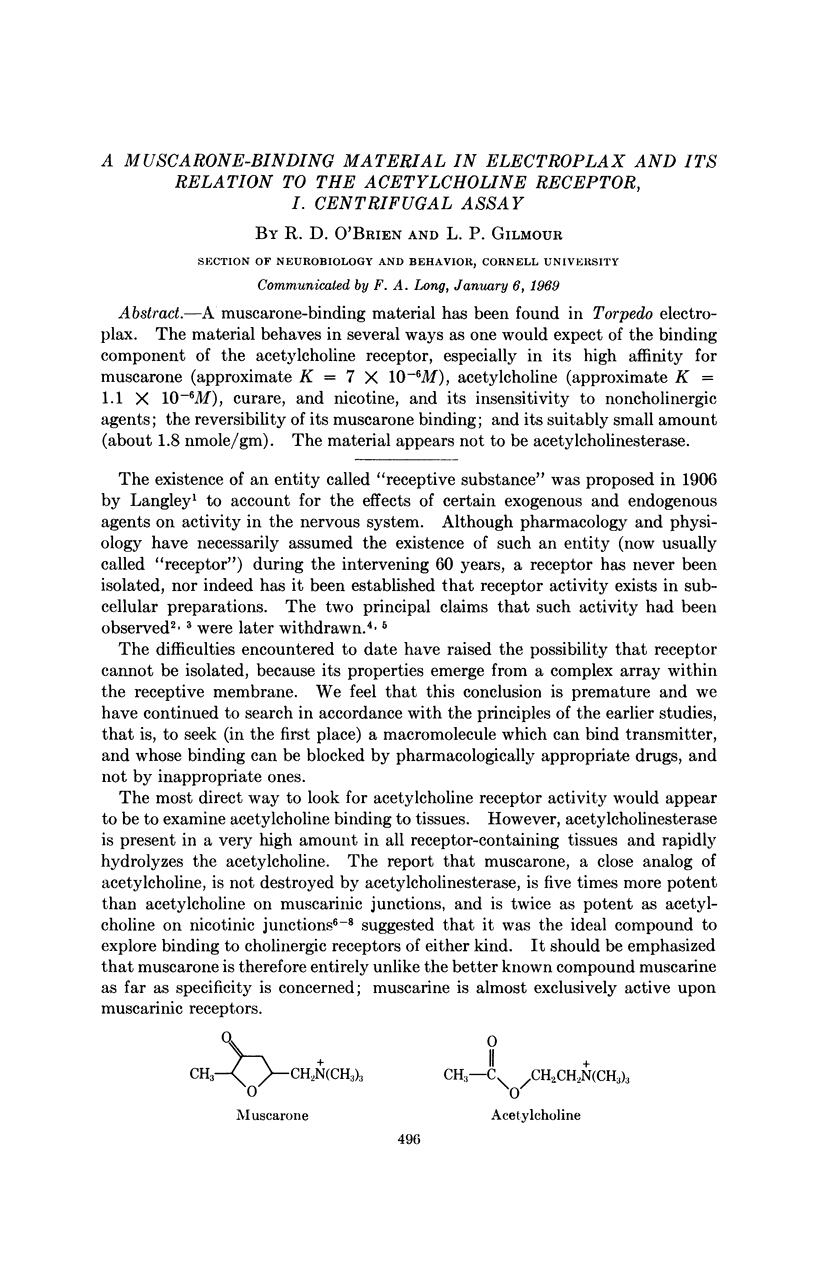
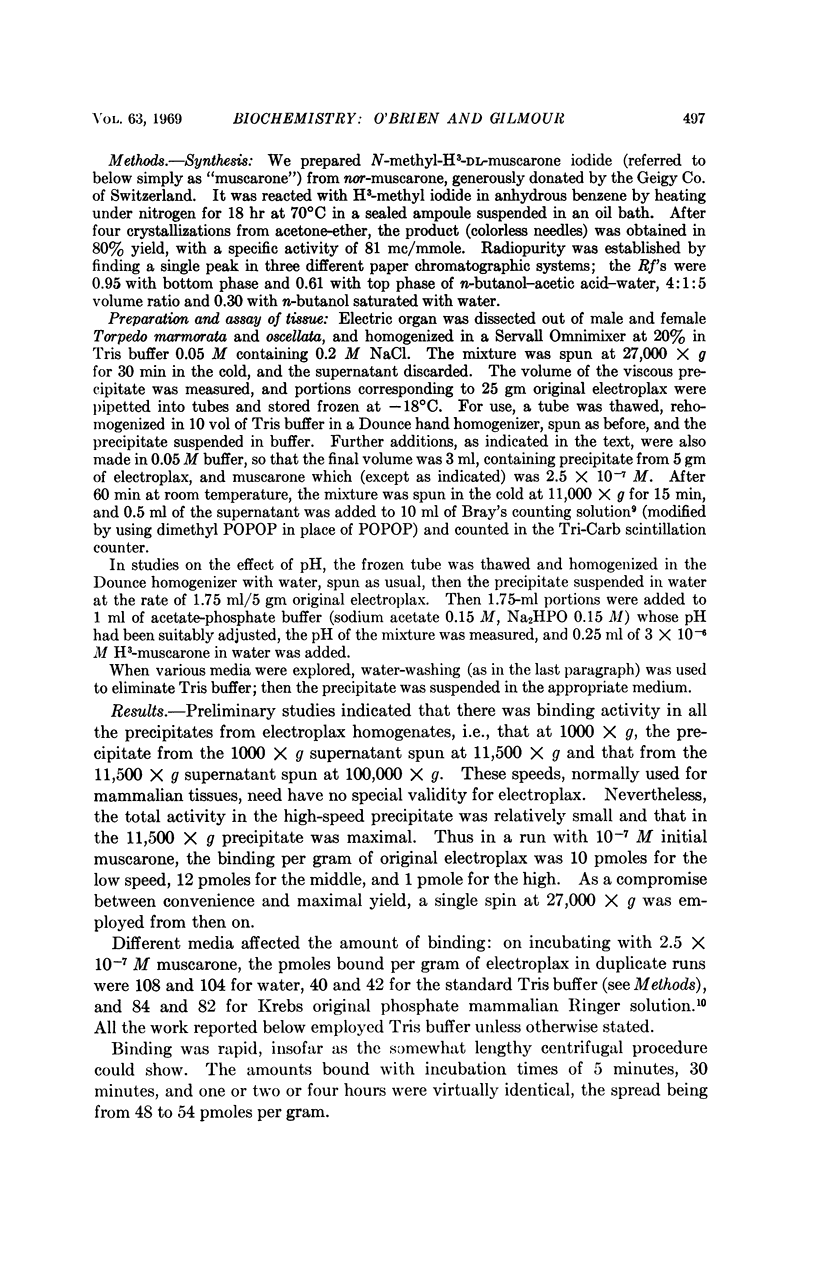
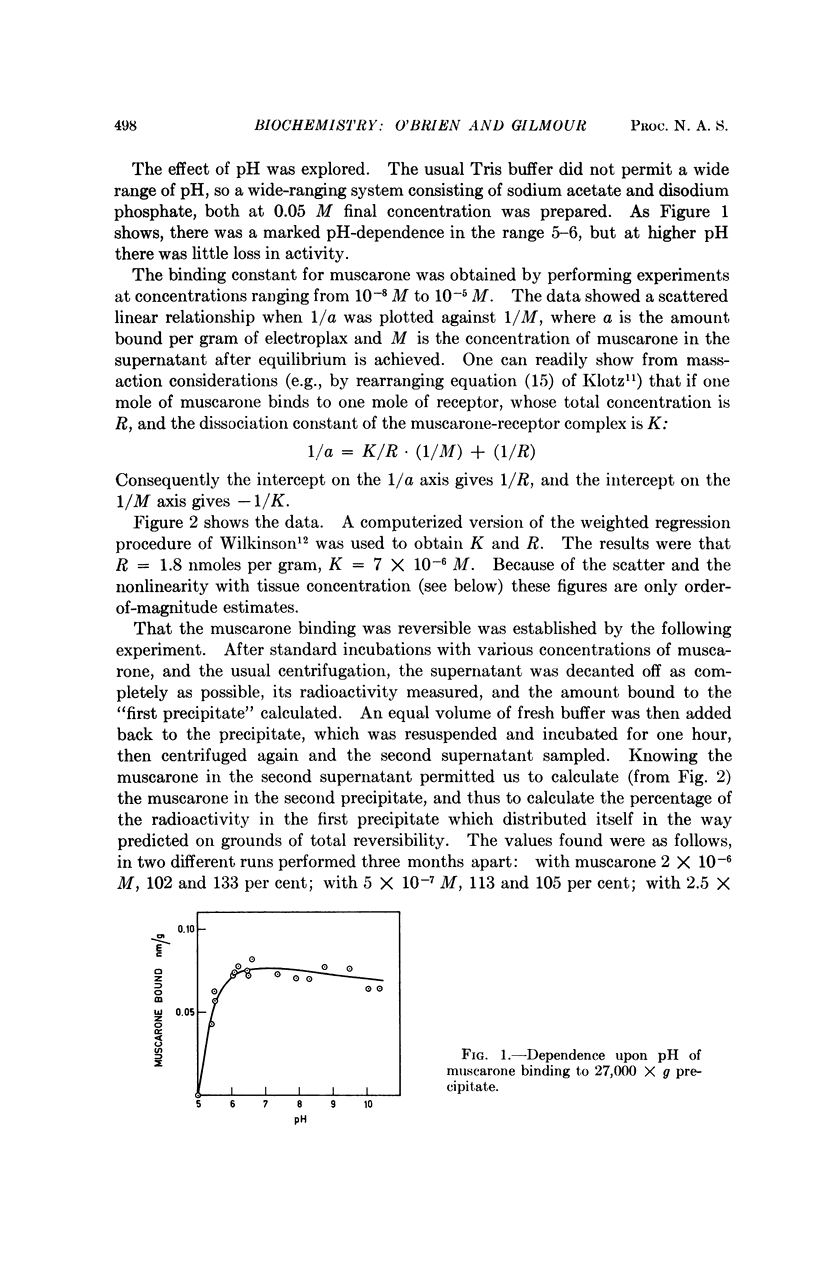
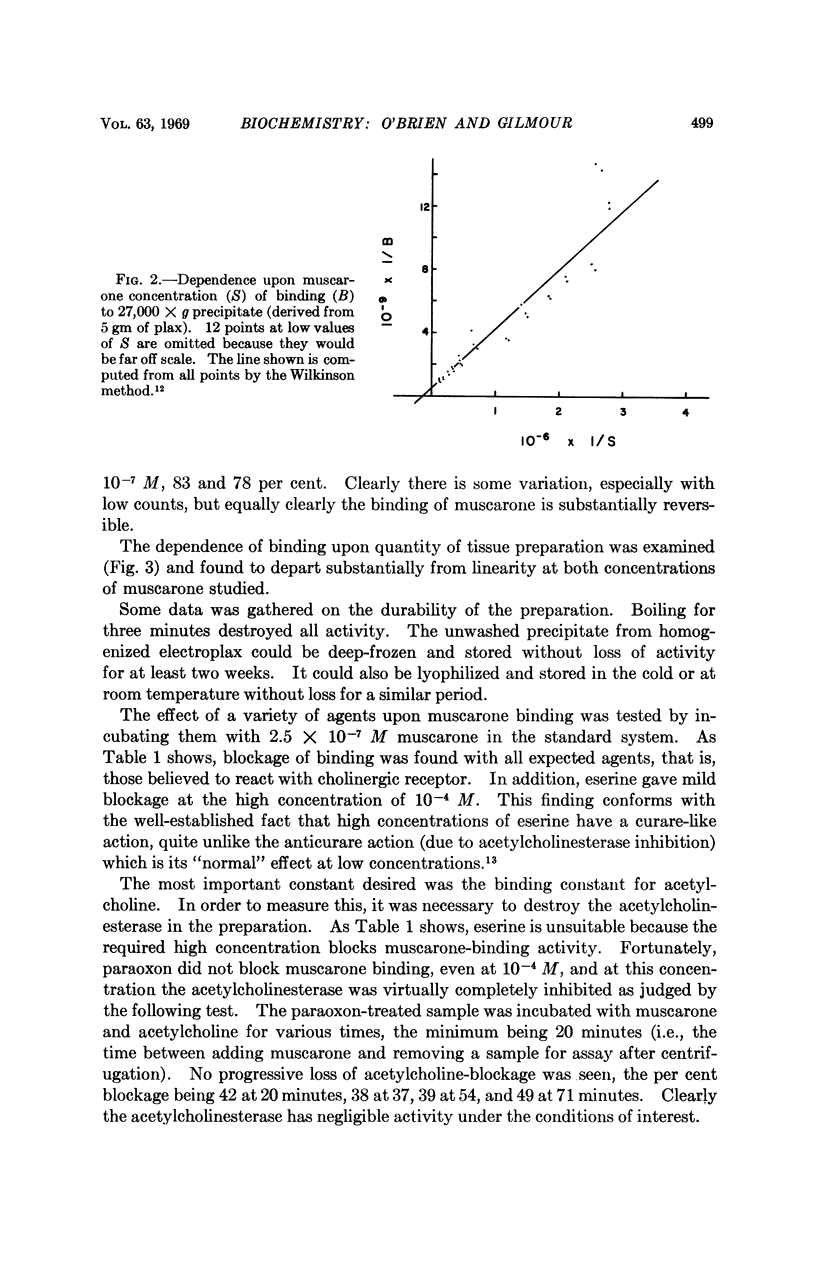
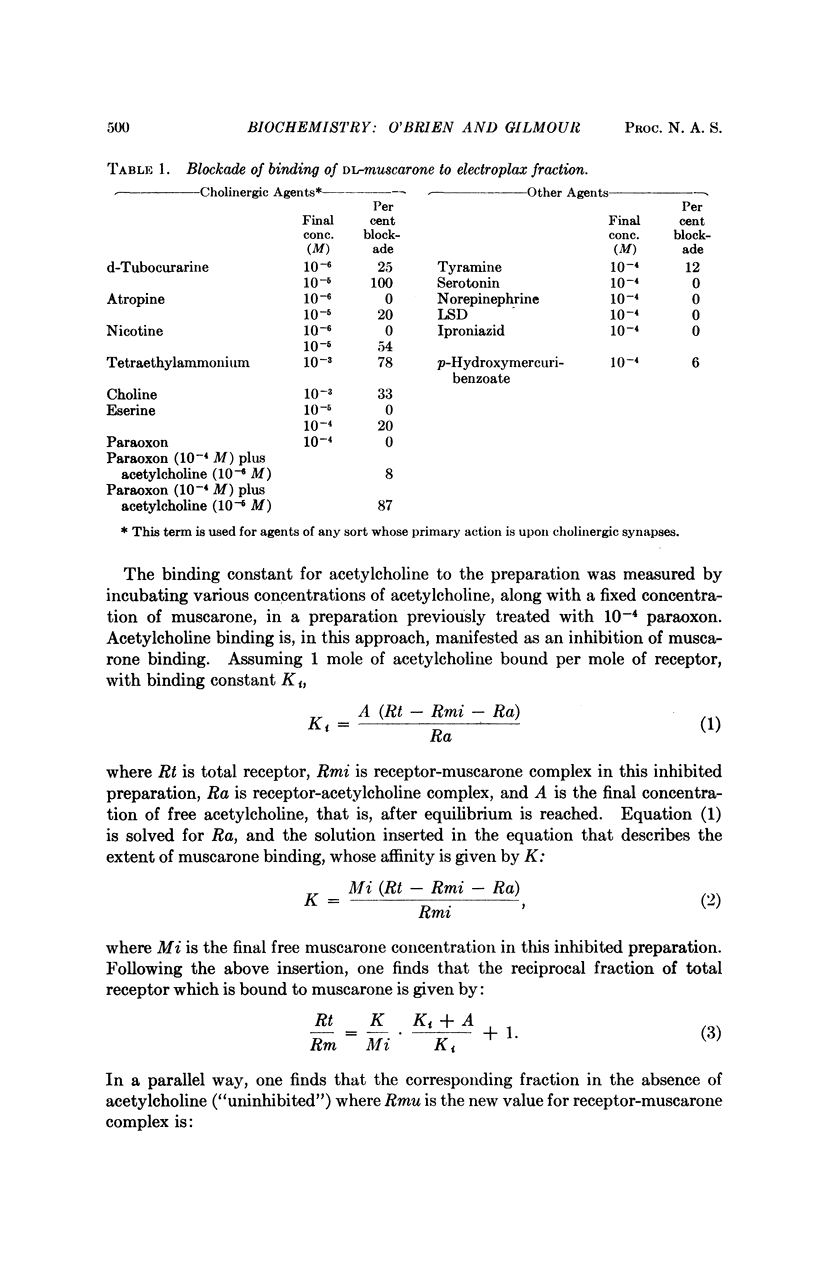
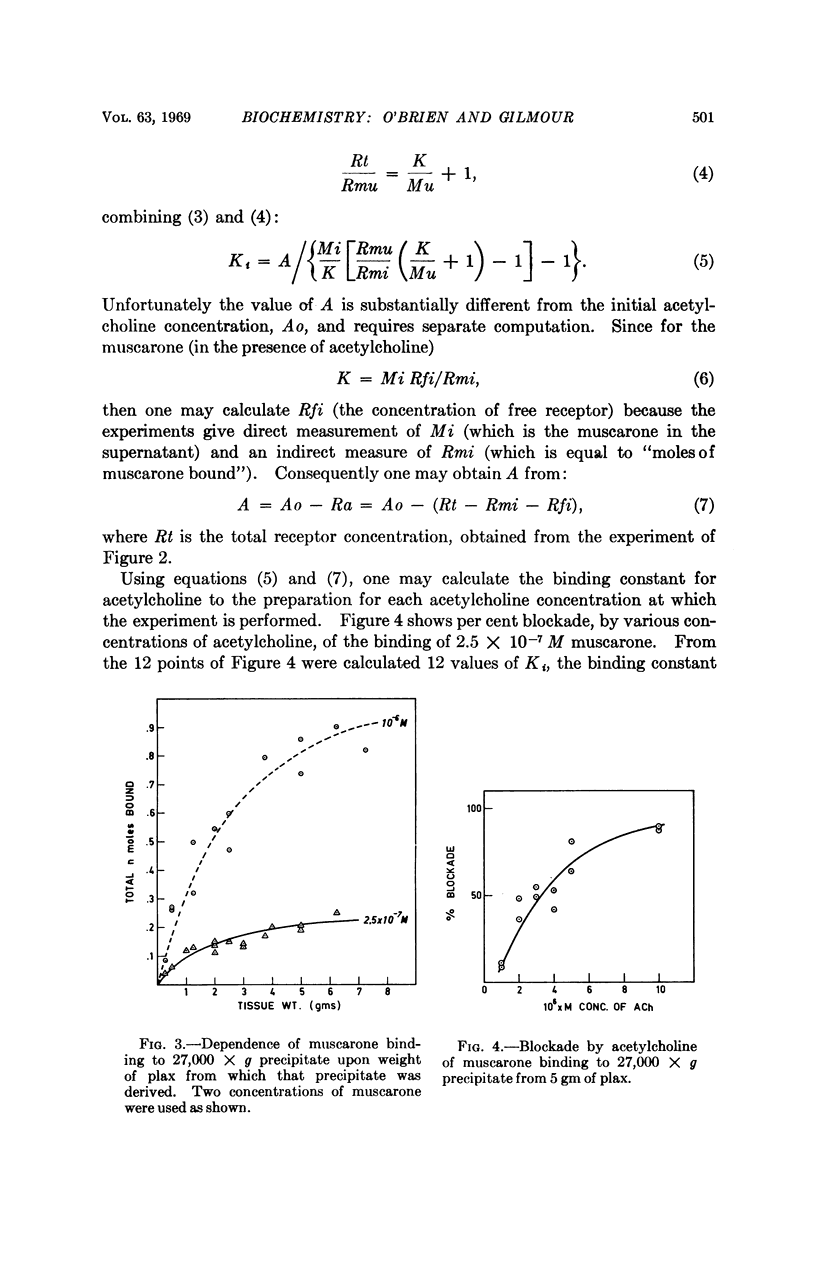
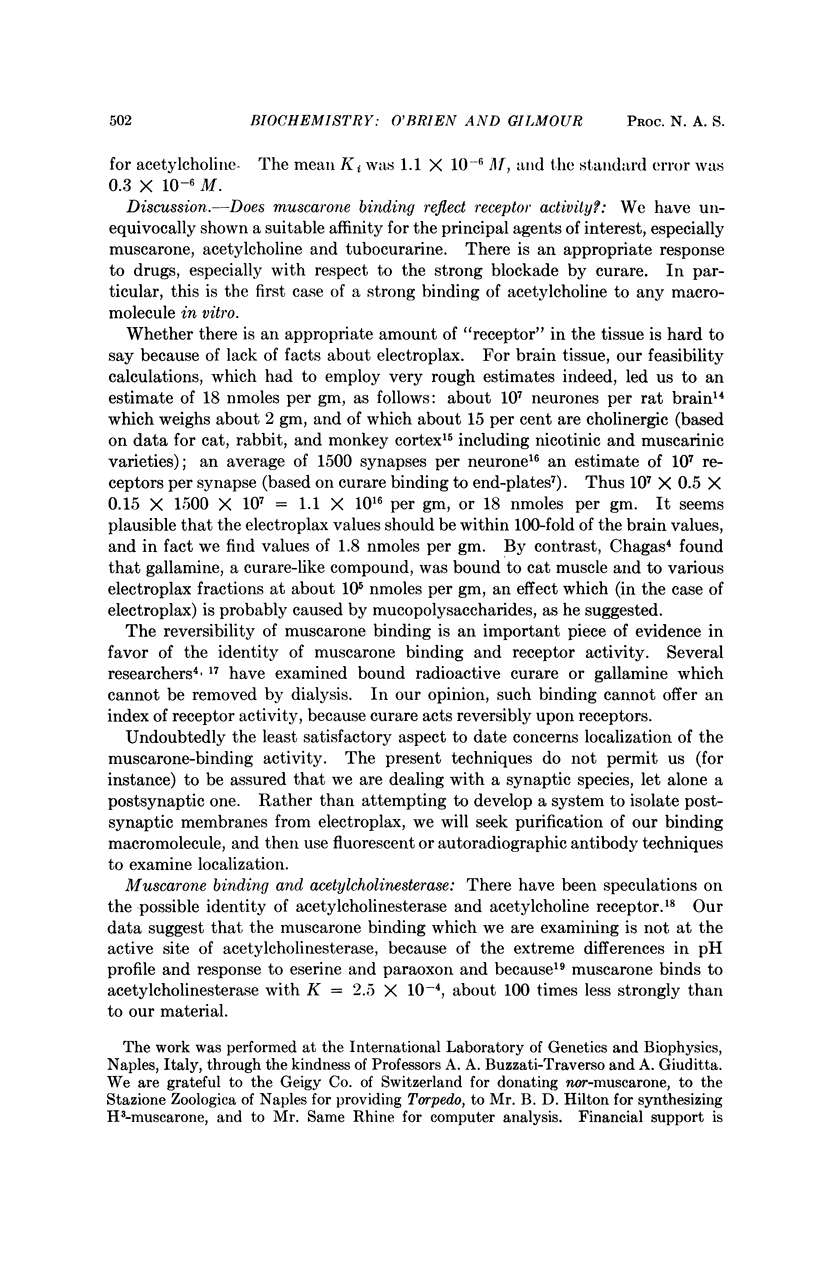
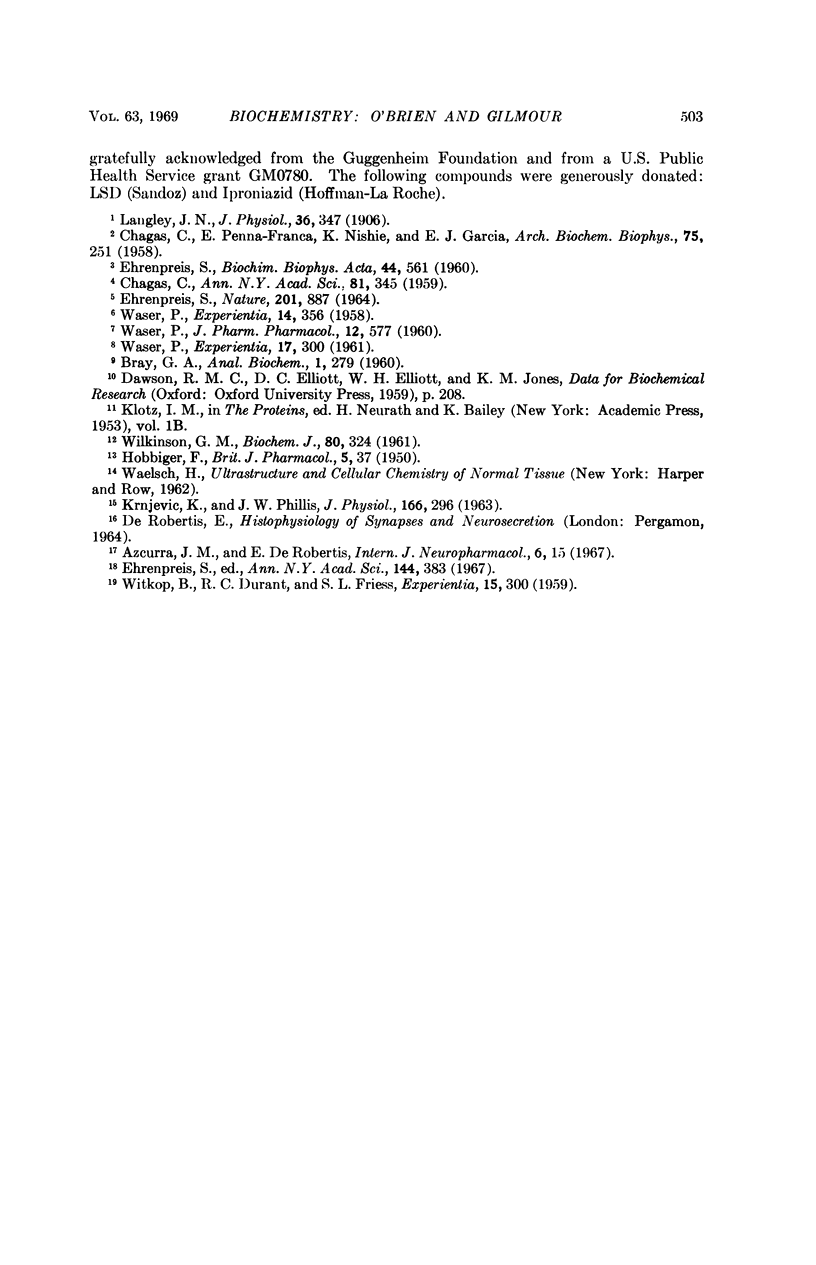
Selected References
These references are in PubMed. This may not be the complete list of references from this article.
- Azcurra J. M., De Robertis E. Binding of dimethyl-C14-d-tubocurarine, methyl-C14-hexamethonium, and H3-alloferine by isolated synaptic membranes of brain cortex. Int J Neuropharmacol. 1967 Jan;6(1):15–26. doi: 10.1016/0028-3908(67)90038-x. [DOI] [PubMed] [Google Scholar]
- CHAGAS C., PENNA-FRANCA E., NISHIE K., GARCIA E. J. A study of the specificity of the complex formed by gallamine triethiodide with a macromolecular constituent of the electric organ. Arch Biochem Biophys. 1958 May;75(1):251–259. doi: 10.1016/0003-9861(58)90414-4. [DOI] [PubMed] [Google Scholar]
- CHAGAS C. Studies on the mechanis of curarization. Ann N Y Acad Sci. 1959 Aug 28;81:345–357. doi: 10.1111/j.1749-6632.1959.tb49318.x. [DOI] [PubMed] [Google Scholar]
- EHRENPREIS S. ACETYLCHOLINE AND NERVE ACTIVITY. Nature. 1964 Feb 29;201:887–893. doi: 10.1038/201887a0. [DOI] [PubMed] [Google Scholar]
- EHRENPREIS S. Isolation and identification of the acetylcholine receptor protein of electric tissue. Biochim Biophys Acta. 1960 Nov 18;44:561–577. doi: 10.1016/0006-3002(60)91610-3. [DOI] [PubMed] [Google Scholar]
- HOBBIGER F. The action of carbamic esters and tetraethylpyrophosphate on normal and curarized frog rectus muscle. Br J Pharmacol Chemother. 1950 Mar;5(1):37–48. doi: 10.1111/j.1476-5381.1950.tb00575.x. [DOI] [PMC free article] [PubMed] [Google Scholar]
- KRNJEVIC K., PHILLIS J. W. Acetylcholine-sensitive cells in the cerebral cortex. J Physiol. 1963 Apr;166:296–327. doi: 10.1113/jphysiol.1963.sp007106. [DOI] [PMC free article] [PubMed] [Google Scholar]
- Langley J. N. On the contraction of muscle, chiefly in relation to the presence of "receptive" substances: Part I. J Physiol. 1907 Dec 31;36(4-5):347–384. doi: 10.1113/jphysiol.1907.sp001236. [DOI] [PMC free article] [PubMed] [Google Scholar]
- WASER P. G. Struktur und Wirkung des Muscarins, des Muscarons und ihrer Stereoisomeren. Experientia. 1958 Sep 15;14(10):356–358. doi: 10.1007/BF02159151. [DOI] [PubMed] [Google Scholar]
- WASER P. G. The cholinergic receptor. J Pharm Pharmacol. 1960 Oct;12:577–594. doi: 10.1111/j.2042-7158.1960.tb12714.x. [DOI] [PubMed] [Google Scholar]
- WASER P. [Structure dependence of the action of muscarine-like compounds]. Experientia. 1961 Jul 15;17:300–302. doi: 10.1007/BF02158163. [DOI] [PubMed] [Google Scholar]
- WILKINSON G. N. Statistical estimations in enzyme kinetics. Biochem J. 1961 Aug;80:324–332. doi: 10.1042/bj0800324. [DOI] [PMC free article] [PubMed] [Google Scholar]
- WITKOP B., DURANT R. C., FRIESS S. L. Acetylcholinesterase inhibitory activities of muscarine and muscarone derivatives. Experientia. 1959 Aug 15;15:300–301. doi: 10.1007/BF02158533. [DOI] [PubMed] [Google Scholar]


